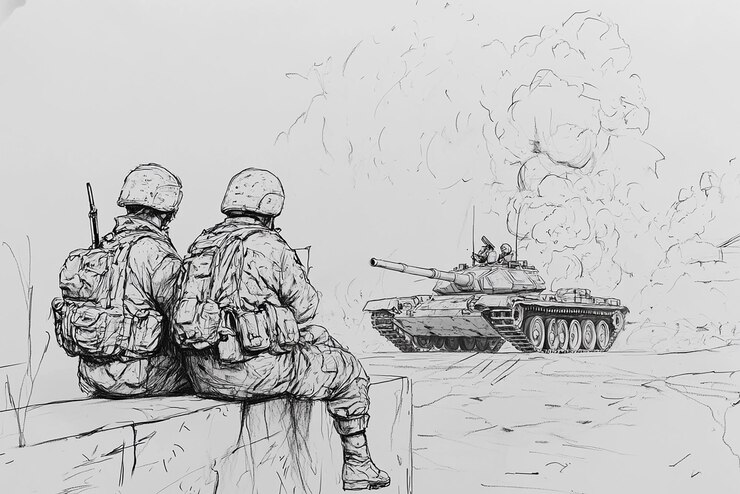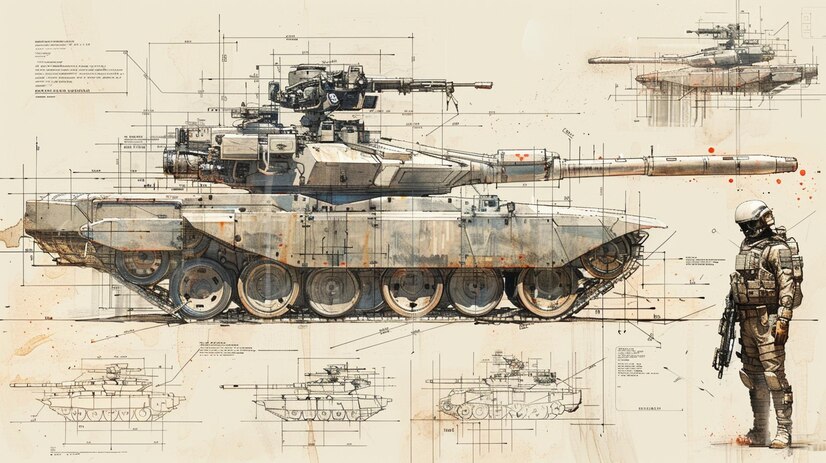The universe of specialized drawings and designing plans is tremendous and complex, particularly while managing military details. One such significant element is navy drawings QEL 1386-1, a crucial set of documentation that requires in-depth understanding to ensure compliance and accuracy. In this article, we will delve into the specifics of Navy Drawings QEL 1386-1, its applications, and why it is vital in naval engineering and military projects.
What is Navy Drawings QEL 1386-1?

Navy drawings QEL 1386-1 refer to a specific set of technical blueprints used within the U.S. Navy for the design, construction, and maintenance of military equipment, ships, and other naval assets. These drawings are part of a larger system of engineering documentation that provides detailed visual representations of naval systems and components. QEL 1386-1 blueprints basic details, materials, and gathering directions that architects and project workers should comply with to fulfill the rigid guidelines expected by the U.S. Naval force.
The “QEL” in QEL 1386-1 means “Qualified Gear Rundown,” which demonstrates that this record is important for a rundown that distinguishes hardware and parts that have passed the Naval force’s through capability process. This guarantees that main endorsed materials and plans are utilized in the development and upkeep of maritime resources, defending execution and unwavering quality.
Importance of Navy Drawings QEL 1386-1 in Naval Engineering
Navy drawings like QEL 1386-1 play a critical role in naval engineering for several reasons:
- Standardization: Navy drawings help maintain a uniform standard across all naval projects. This normalization is vital for guaranteeing that parts from various producers or workers for hire are viable with one another.
- Quality Control: By adhering to the rules set out in QEL 1386-1, producers and specialists can guarantee that the gear satisfies the Naval force’s high guidelines for sturdiness, execution, and wellbeing.
- Documentation: These drawings act as true records, giving a point by point reference to engineers during the development and support stages. This documentation is fundamental for investigating and fixes, guaranteeing that maritime vessels and gear stay functional consistently.
- Compliance with Military Specifications: The U.S. Naval force has rigid prerequisites with regards to the materials and parts utilized in its hardware. By sticking to the determinations framed in Naval force Drawings QEL 1386-1, workers for hire guarantee consistency with military guidelines, staying away from exorbitant missteps and deferrals.
Components of Navy Drawings QEL 1386-1
A typical Navy Drawing QEL 1386-1 contains the following key components:
1. Title Block
The title block is a standard feature of all technical drawings, and QEL 1386-1 is no exception. This segment contains fundamental data, for example, the drawing number, amendment level, and title of the drawing. It additionally incorporates the name of the worker for hire or designer answerable for the drawing, as well as any important venture or agreement data.
2. Drawing Scale
The scale of the drawing is crucial for accurately interpreting the dimensions and proportions of the components depicted in the Navy Drawing. QEL 1386-1 ensures that all dimensions are represented to a standard scale, allowing engineers and manufacturers to fabricate components with precision.
3. Material Specifications
One of the most critical aspects of Navy Drawings QEL 1386-1 is the material specification section. This piece of the drawing frames the kinds of materials that should be utilized for every part. These materials are painstakingly decided to meet the Naval force’s severe prerequisites for strength, sturdiness, and protection from brutal marine conditions.
4. Assembly Instructions
For complex systems and equipment, Navy Drawings QEL 1386-1 often include detailed assembly instructions. These directions guide designers and professionals through the bit by bit course of developing the hardware, guaranteeing that each part is collected accurately and as indicated by Naval force principles.
5. Dimensional Tolerances
Layered residences are determined in QEL 1386-1 to guarantee that parts fit together accurately. These resistances are basic for guaranteeing that the gear capabilities as planned and can endure the anxieties of maritime tasks.
6. Approval Signatures
Navy Drawings QEL 1386-1 often require approval from multiple parties, including engineers, quality control officers, and Navy representatives. These signatures indicate that the drawing has been reviewed and approved for use in naval projects.
The Process of Creating and Approving Navy Drawings QEL 1386-1
Creating a Navy Drawing QEL 1386-1 is a meticulous process that involves collaboration between engineers, designers, and quality control specialists. The steps typically include:
- Initial Design and Drafting: Specialists make a primer plan in light of the task’s determinations and necessities. This plan is then changed over into definite specialized drawings.
- Review and Revision: The underlying drafts of the drawings are checked on by a group of specialists and quality control work force. Any blunders or irregularities are adjusted, and the drawings are reconsidered depending on the situation.
- Material Selection: The materials for every part are chosen in view of the Naval force’s details. This interaction frequently includes broad testing to guarantee that the materials satisfy the necessary guidelines for strength, sturdiness, and execution.
- Final Approval: When the drawing meets the Naval force’s principles, it is submitted for conclusive endorsement. The drawing is looked into by a board of specialists, including Naval force delegates, to guarantee that it meets generally vital necessities.
- Implementation: After endorsement, the Naval force Drawing QEL 1386-1 is utilized as the authority guide for assembling and gathering the gear.
Why Accuracy in Navy Drawings QEL 1386-1 is Crucial

The accuracy of Navy Drawings QEL 1386-1 is vital for several reasons:
- Safety: Maritime gear should work in probably the most difficult conditions on The planet. Precise drawings guarantee that hardware is worked to endure these circumstances, safeguarding both the vessel and its team.
- Operational Efficiency: Wrong drawings can prompt hardware breakdowns, postpones underway, and expanded support costs. By sticking to the details framed in QEL 1386-1, architects can guarantee that maritime resources work effectively and dependably.
- Cost Control: Missteps in the plan or development cycle can be expensive. Observing the rules set out in Naval force Drawings QEL 1386-1 forestalls mistakes that could prompt costly adjustments or postpones in the conveyance of basic hardware.
Conclusion
Naval force Drawings QEL 1386-1 are a fundamental piece of the maritime designing cycle, guaranteeing that all hardware and parts fulfill the thorough guidelines set by the U.S. Naval force. From material choice to gathering directions, these drawings give an exhaustive manual for specialists and producers, assisting with guaranteeing the wellbeing, unwavering quality, and execution of maritime resources.
By figuring out the significance of Naval force Drawings QEL 1386-1 and sticking to its determinations, workers for hire and specialists can add to the progress of maritime tasks.
FAQs.
What is Navy Drawings QEL 1386-1?
Navy Drawings QEL 1386-1 are technical blueprints used by the U.S. Navy to guide the design, construction, and maintenance of naval equipment.
Why are Navy Drawings QEL 1386-1 important?
They guarantee that maritime hardware meets severe wellbeing, toughness, and execution guidelines, guaranteeing functional unwavering quality.
What does “QEL” stand for in QEL 1386-1?
“QEL” stands for Qualified Equipment List, indicating that the materials and components meet Navy approval.
Who approves Navy Drawings QEL 1386-1?
A panel of engineers, quality control officers, and Navy representatives review and approve these drawings.
What key information is included in Navy Drawings QEL 1386-1?
They include title blocks, material specifications, assembly instructions, dimensional tolerances, and approval signatures.
Stay in touch to get more information on World Scope ! Thank you

